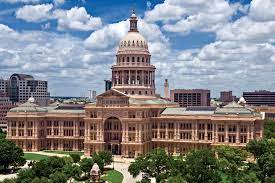Adult Education & Literacy Advisory Committee
Adult Education & Literacy Advisory Committee - Texas Workforce ... Texas Workforce Commission


The Role of the Adult Education and Literacy (AEL) Advisory Committee

The Adult Education and Literacy (AEL) Advisory Committee plays a crucial role in supporting the Texas Workforce Commission (TWC) in achieving the Sustainable Development Goals (SDGs) by focusing on various important tasks:
1. Policy and Priority Development
- The committee works on creating policies and priorities that support the building of an educated and skilled workforce, aligning with SDG 4 (Quality Education) and SDG 8 (Decent Work and Economic Growth).
2. Guidelines and Standards
- They develop guidelines and standards for AEL services statewide, ensuring a balanced approach between general education and workplace skills development, contributing to SDG 4 (Quality Education) and SDG 8 (Decent Work and Economic Growth).
3. Transition Planning
- The committee creates a plan to facilitate the smooth transition of students into postsecondary education and career training programs, supporting SDG 4 (Quality Education) and SDG 8 (Decent Work and Economic Growth).
4. Data Collection and Tracking
- They establish a system to collect and track data on the performance of adult education and literacy programs, contributing to SDG 4 (Quality Education) and SDG 17 (Partnerships for the Goals).
5. Partnership Exploration
- The committee explores potential partnerships with nonprofit organizations, businesses, and other entities to enhance literacy programs across the state, aligning with SDG 4 (Quality Education) and SDG 17 (Partnerships for the Goals).
The AEL Advisory Committee consists of up to nine members, including at least one representative from a business and one from a local Workforce Solutions office. The members serve for two years, with staggered terms.
SDGs, Targets, and Indicators
1. Which SDGs are addressed or connected to the issues highlighted in the article?
- SDG 4: Quality Education
- SDG 8: Decent Work and Economic Growth
- SDG 17: Partnerships for the Goals
2. What specific targets under those SDGs can be identified based on the article’s content?
- SDG 4.3: By 2030, ensure equal access for all women and men to affordable and quality technical, vocational, and tertiary education, including university.
- SDG 4.4: By 2030, substantially increase the number of youth and adults who have relevant skills, including technical and vocational skills, for employment, decent jobs, and entrepreneurship.
- SDG 8.6: By 2020, substantially reduce the proportion of youth not in employment, education, or training.
- SDG 17.6: Enhance North-South, South-South, and triangular regional and international cooperation on and access to science, technology, and innovation and enhance knowledge sharing on mutually agreed terms, including through improved coordination among existing mechanisms, particularly at the United Nations level, and through a global technology facilitation mechanism.
3. Are there any indicators mentioned or implied in the article that can be used to measure progress towards the identified targets?
Yes, there are indicators mentioned in the article that can be used to measure progress towards the identified targets. These indicators include:
- Number of policies and priorities created to support building an educated and skilled workforce.
- Guidelines and standards developed for AEL services statewide.
- Transition plan created to help students smoothly enter postsecondary education and career training programs.
- Data collection and tracking system established to measure the performance of adult education and literacy programs.
- Number of partnerships formed with nonprofit organizations, businesses, and other entities to improve literacy programs across the state.
SDGs, Targets, and Indicators
| SDGs | Targets | Indicators |
|---|---|---|
| SDG 4: Quality Education | 4.3: By 2030, ensure equal access for all women and men to affordable and quality technical, vocational, and tertiary education, including university. | – Number of policies and priorities created to support building an educated and skilled workforce. – Guidelines and standards developed for AEL services statewide. – Transition plan created to help students smoothly enter postsecondary education and career training programs. |
| SDG 8: Decent Work and Economic Growth | 8.6: By 2020, substantially reduce the proportion of youth not in employment, education, or training. | – Data collection and tracking system established to measure the performance of adult education and literacy programs. |
| 4.4: By 2030, substantially increase the number of youth and adults who have relevant skills, including technical and vocational skills, for employment, decent jobs, and entrepreneurship. | – Number of partnerships formed with nonprofit organizations, businesses, and other entities to improve literacy programs across the state. | |
| SDG 17: Partnerships for the Goals | 17.6: Enhance North-South, South-South, and triangular regional and international cooperation on and access to science, technology, and innovation and enhance knowledge sharing on mutually agreed terms, including through improved coordination among existing mechanisms, particularly at the United Nations level, and through a global technology facilitation mechanism. | – Number of partnerships formed with nonprofit organizations, businesses, and other entities to improve literacy programs across the state. |
Behold! This splendid article springs forth from the wellspring of knowledge, shaped by a wondrous proprietary AI technology that delved into a vast ocean of data, illuminating the path towards the Sustainable Development Goals. Remember that all rights are reserved by SDG Investors LLC, empowering us to champion progress together.
Source: twc.texas.gov

Join us, as fellow seekers of change, on a transformative journey at https://sdgtalks.ai/welcome, where you can become a member and actively contribute to shaping a brighter future.







